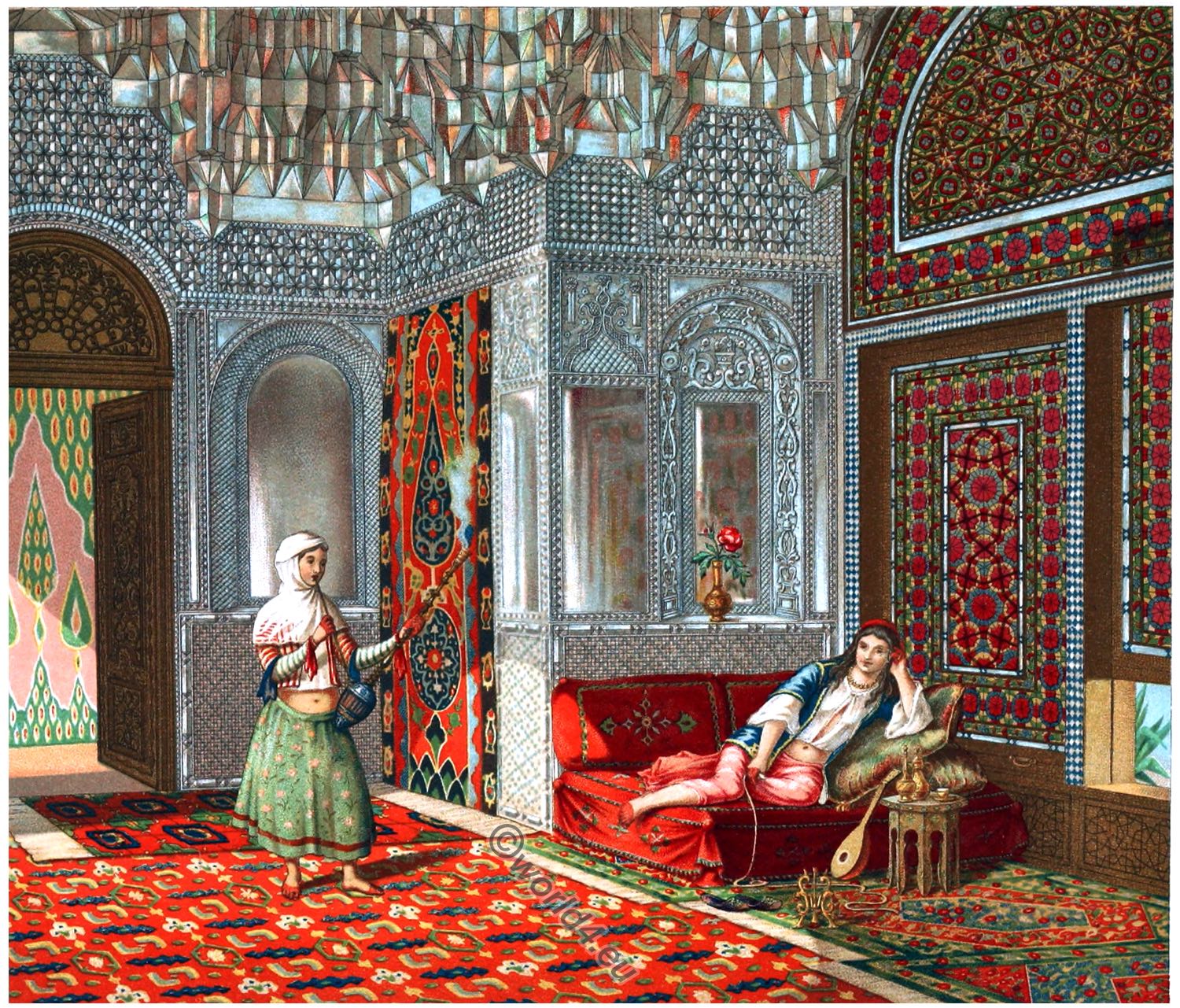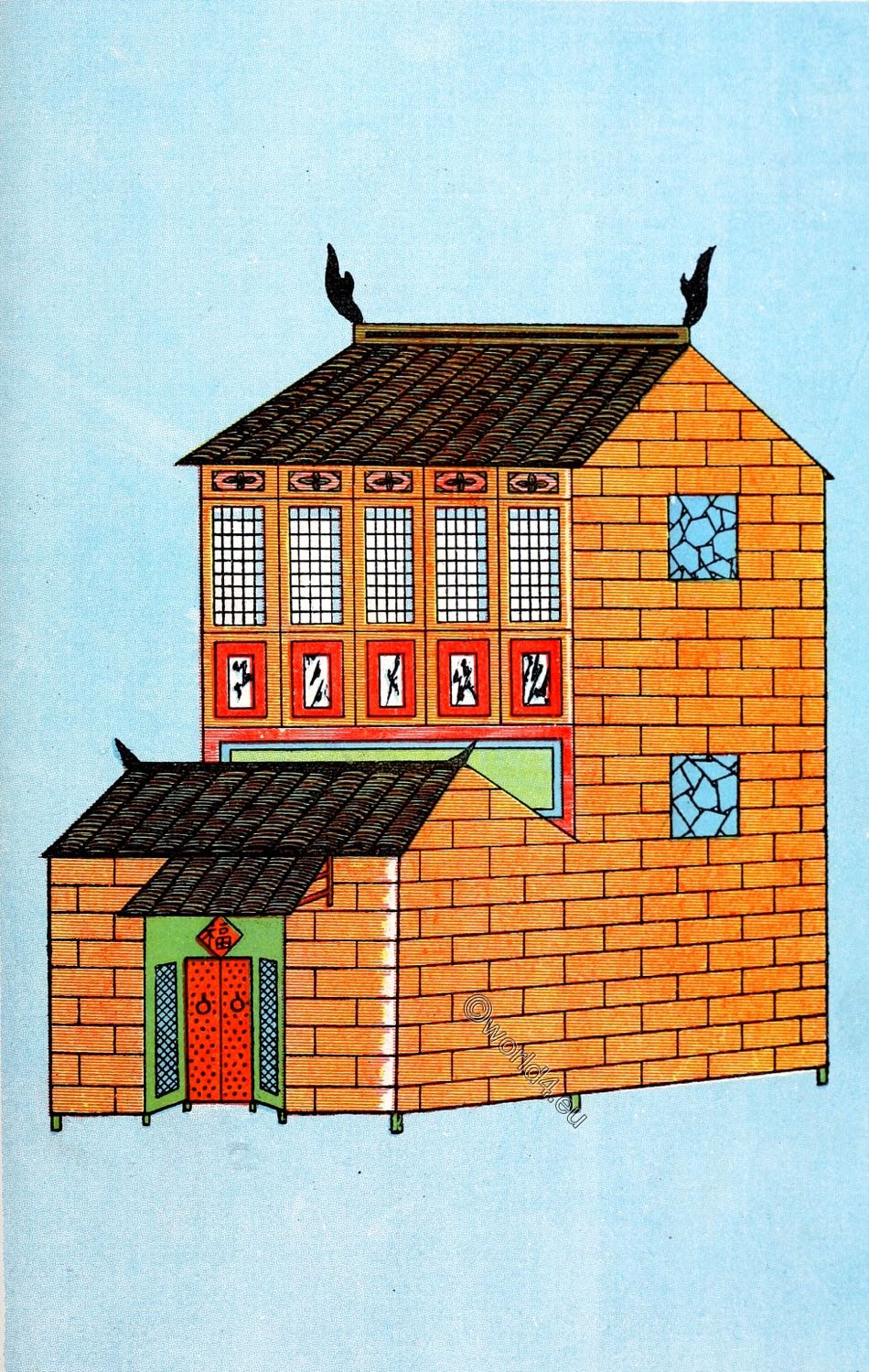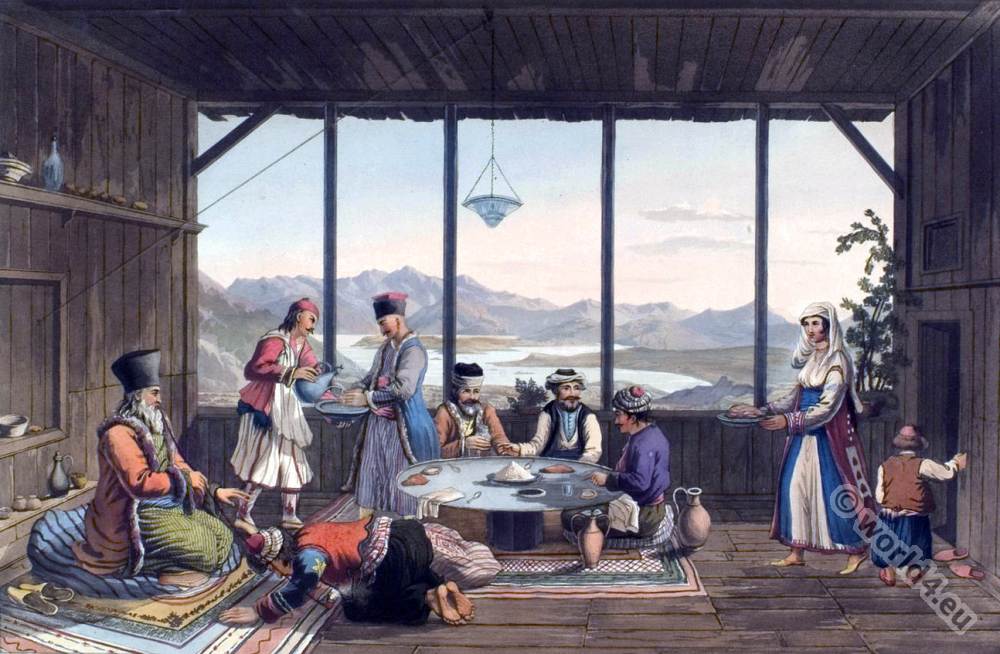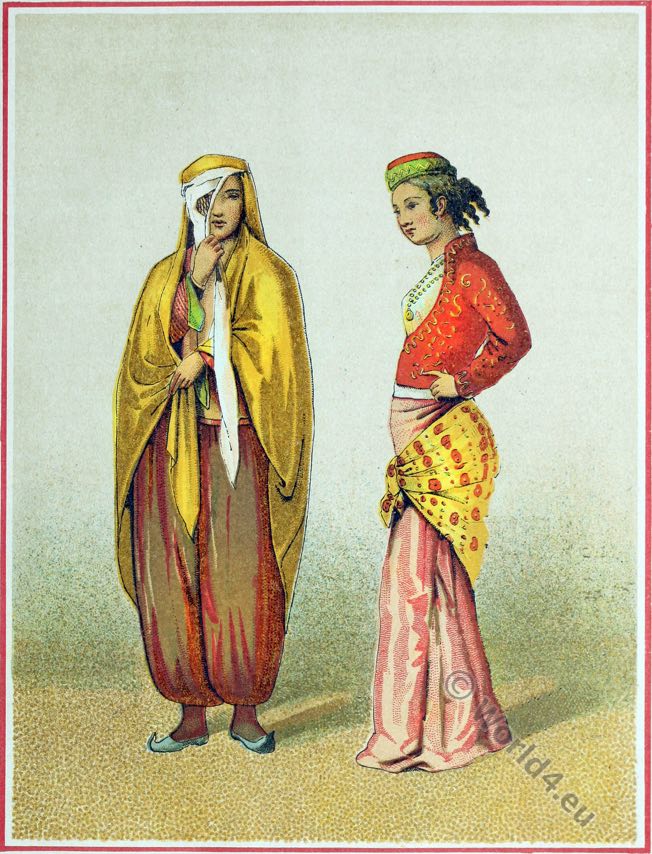Taoist priests use colored charms and rituals to protect and cleanse homes from fire, invoking the God of Fire.
CHARMS PROTECTING FROM FIRE.
These charms are employed by Taoist priests, Tao-shi, who use them for the purpose of informing “Yen-li” the God of Fire (1), that such a family has suffered from a conflagration.
The person whose house has been burnt must not enter the house of others during the three days subsequent to the fire. It is only when the Taoist priests, Tao-shi, have completed the expiatory ceremony, on the scene of the disaster, that the poor sufferers may resume their usual relations with their neighbors.
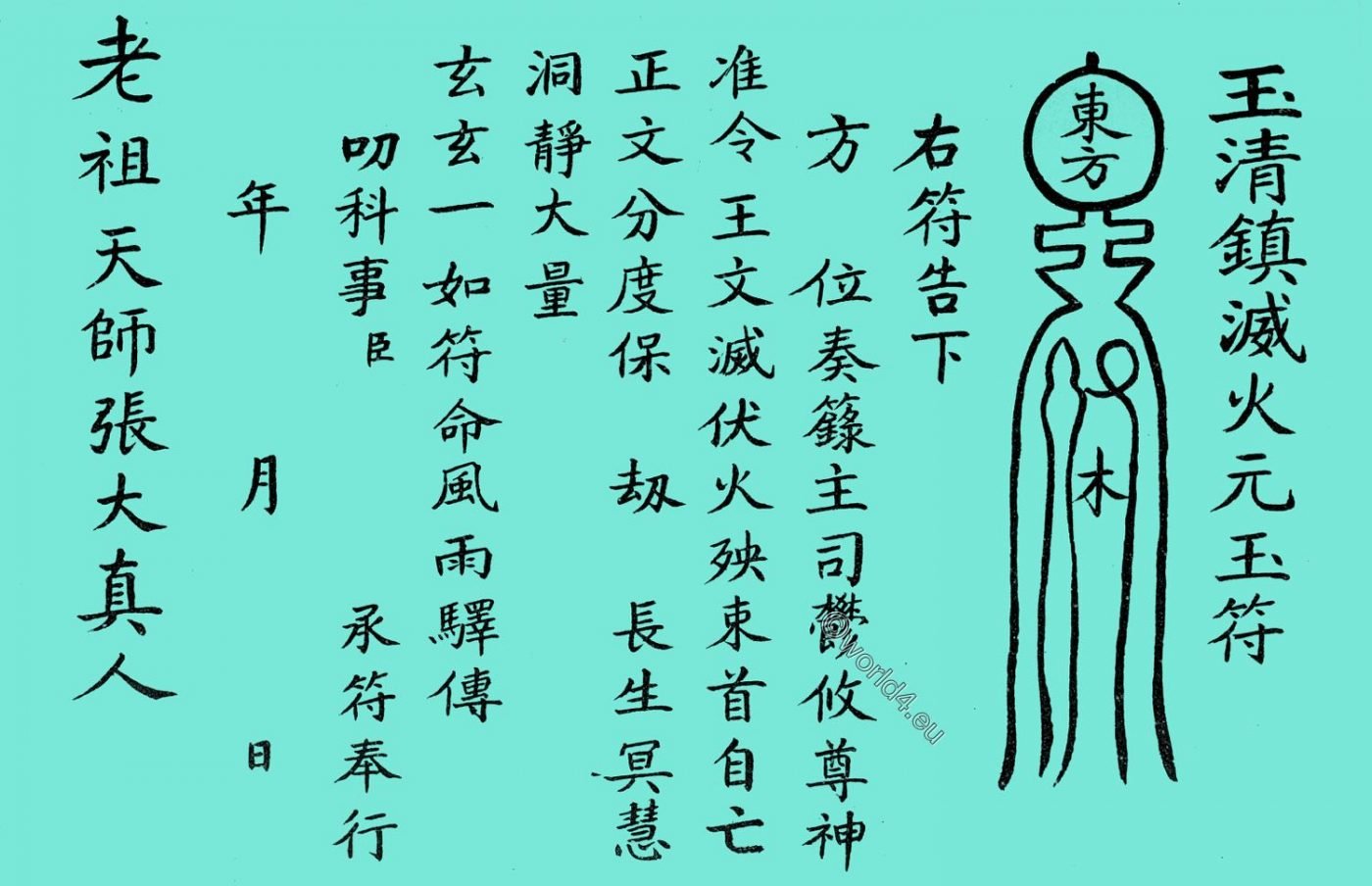

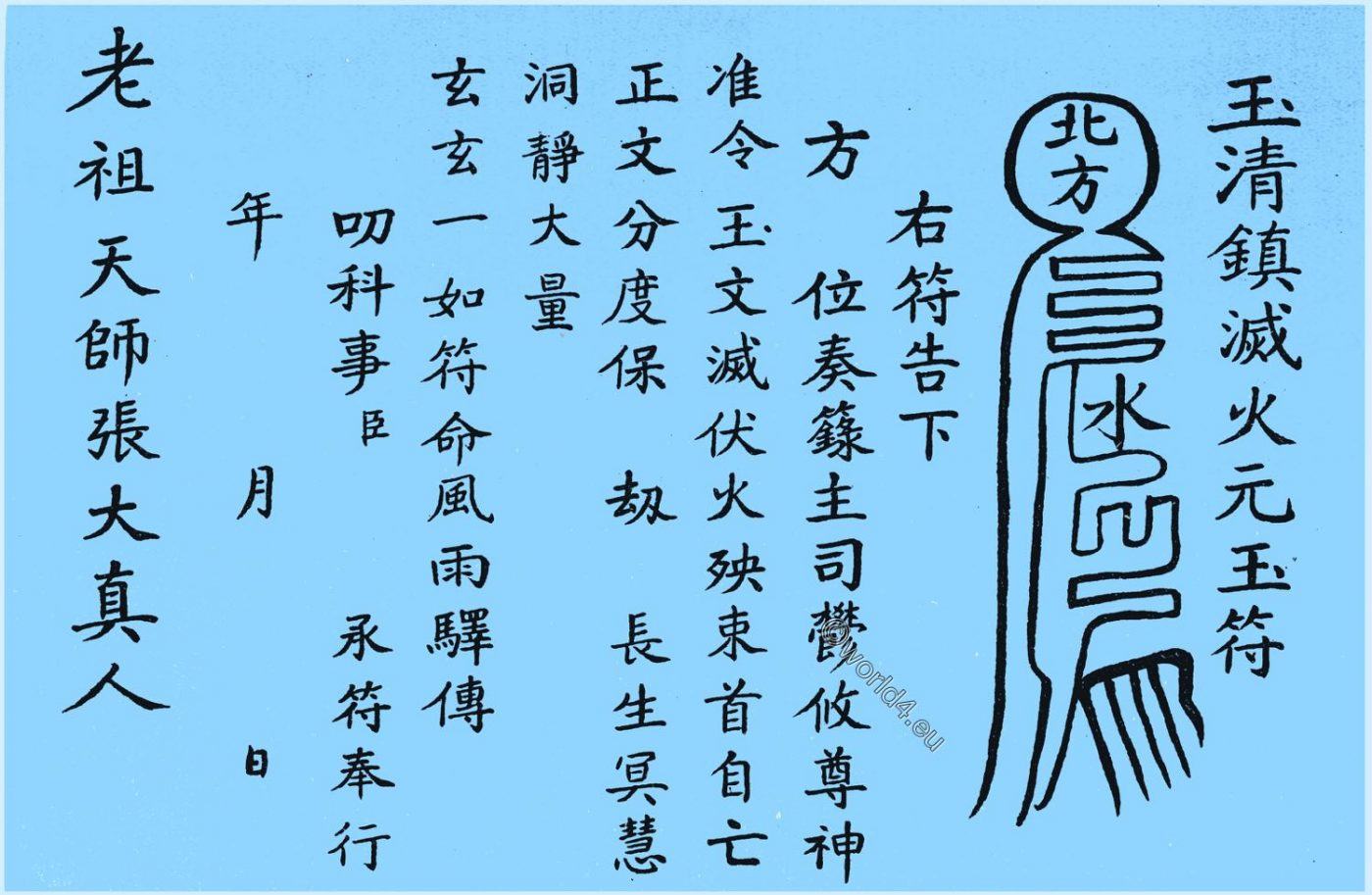
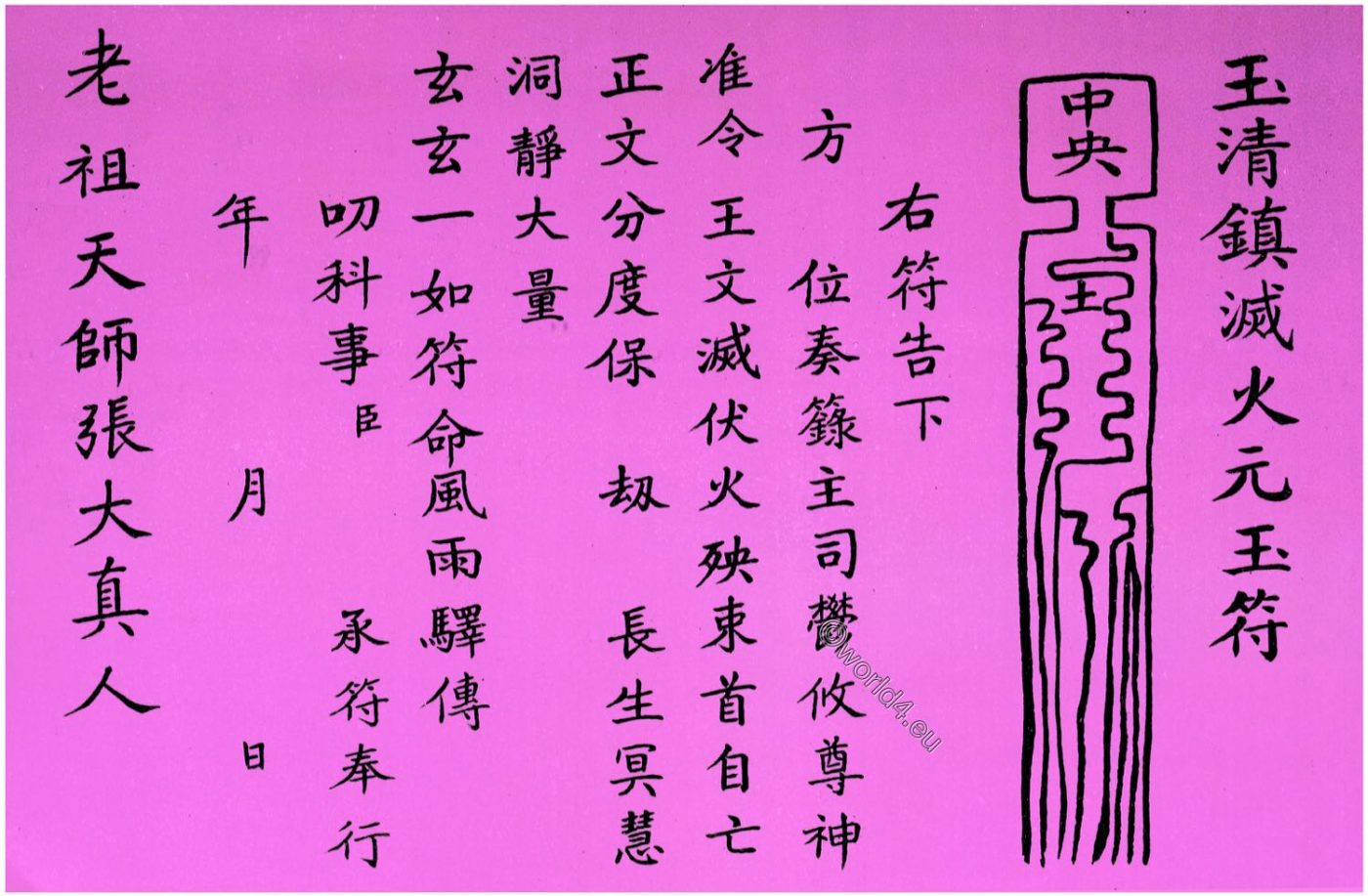
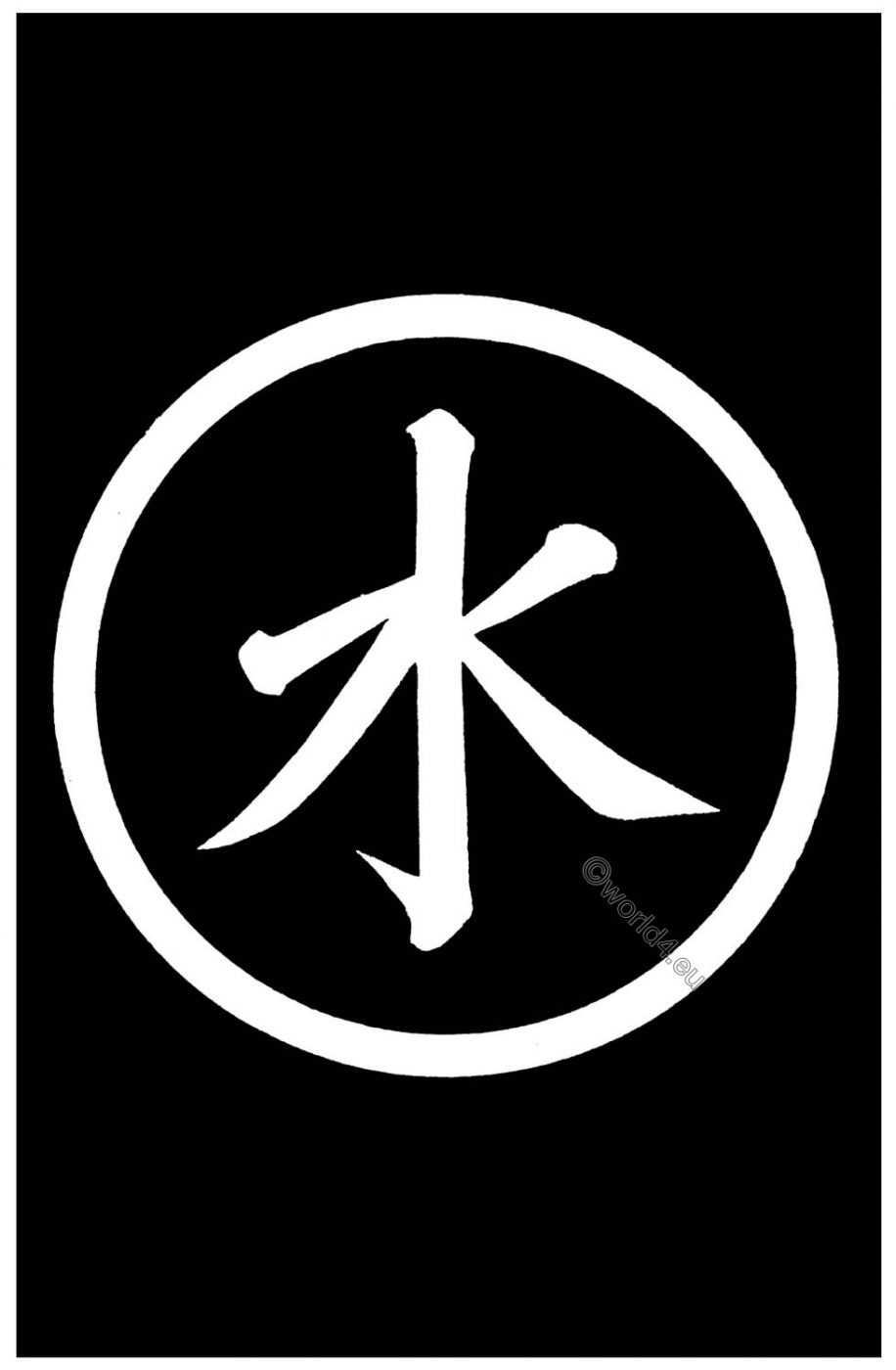
The priests suspend the five following charms, bearing five different colours, towards the five directions of the compass. Green towards the East, red towards the South, yellow towards the West, blue towards the North, and violet in the Centre. Each sheet bears one of the names of the Five Elements: metal, wood, water, fire and earth. Kin, muh, shui, hwo, t’u.
When Buddhist priests are summoned to pray on the scene of the disaster, they frequently write on the charred buildings the character “water”, Shui, enclosing it within a circle. As the walls are generally blackened by the smoke and flames, they employ lime-water to trace these circles, and write out the characters.
(1) Also styled the “Fiery Ruler of the Southern Regions”. He is much reverenced and feared. In South China, an annual ceremony is performed in the fourth month to propitiate him and beg his aid in preventing tires. When a building escapes in a conflagration, he is thanked either in his temple or near the place destroyed. Taoist priests officiate. Food, wine and tea, are offered to him. The candles, however, may not be red, as this is inauspicious, but white, yellow or green. Doolittle. Social Life of the Chinese. Vol. I. p. 260.
Source: Recherches sur les superstitions en Chine par Henri Doré. VOL 2. Le Panthéon Chinois, Zi-Ka-Wei 1916.


